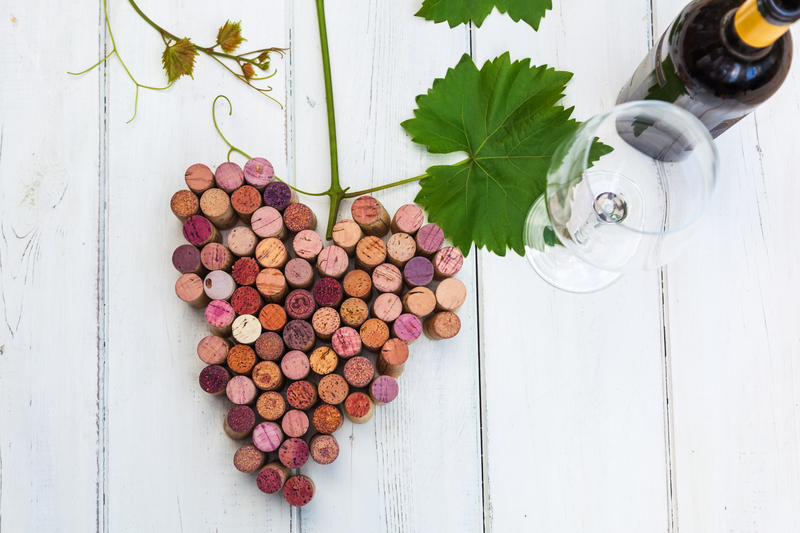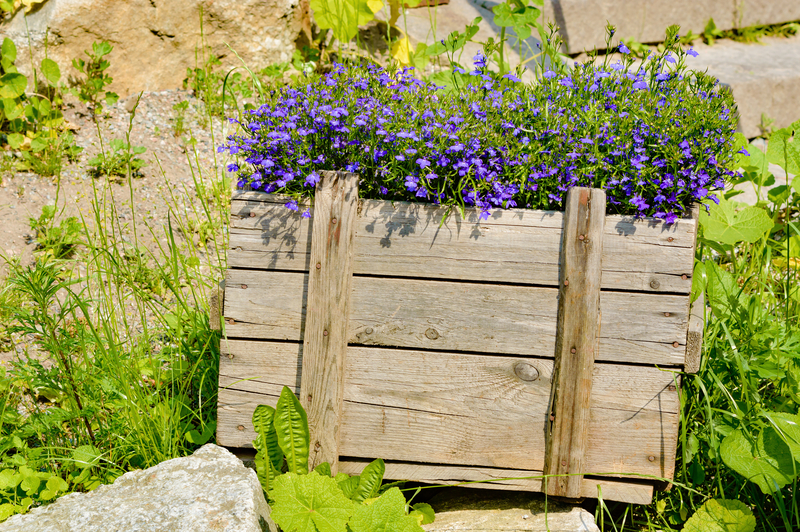Thoughtful Upcycling Techniques for Eco-Friendly and Artistic Transformations
In today's rapidly evolving world, the art of upcycling has become an essential practice for eco-conscious individuals and creative enthusiasts alike. At its core, upcycling is the process of transforming discarded or unused items into materials or products of higher quality or value, all while reducing waste and supporting a more sustainable lifestyle. This comprehensive guide explores a multitude of thoughtful upcycling techniques that blend ecological responsibility with artistic innovation. By the end of this article, you'll discover actionable, inspiring, and creative ways to create eco-friendly transformations in your daily life, home, and community.
Understanding Upcycling: The Artistic and Eco-Friendly Solution
Upcycling is more than just recycling; it's about reimagining the potential of everyday objects with creativity and purpose. Unlike traditional recycling, which often breaks down items into raw materials, upcycling retains the original form and adds artistic or functional enhancements, thus extending the product's lifecycle and minimizing environmental impact.
The Environmental Significance of Upcycling
- Reduces landfill waste: Diverts items from landfills, lessening toxic build-up and space usage.
- Conserves resources: Decreases the demand for raw materials and the energy-intensive process of manufacturing new goods.
- Lowers carbon footprint: Minimizes greenhouse gases associated with production, transportation, and disposal.
- Encourages mindful consumption: Fosters a culture of repair, reuse, and creative problem-solving.

Artistic Transformations: Unique Upcycling Ideas for Your Home
Bringing upcycled art into your home is a powerful way to express personal creativity and reinforce sustainable values. With the right techniques, ordinary items destined for the trash can become extraordinary decorative pieces or functional home features.
1. Furniture Reinvention
- Old Pallets: Convert weathered shipping pallets into rustic coffee tables, benches, or even bed frames. Sand down the wood, add a layer of paint or stain, and finish with sealant for durability.
- Vintage Suitcase Chairs: Transform hard-shell suitcases into quirky and comfortable accent chairs by adding legs and plush cushioning.
- Bookshelves from Ladders: An unused wooden ladder can be repurposed into a striking bookshelf. Secure the ladder to a wall for open shelving or horizontally for more traditional storage.
2. Creative Lighting Solutions
- Bottle Lamps: Empty glass bottles, such as wine or liquor bottles, can be cleaned and fitted with string lights or bulb fixtures for stylish and eco-friendly lighting.
- Mason Jar Chandeliers: Upcycle mason jars into pendant light fixtures by suspending them from reclaimed wood and adding LED bulbs.
- Colander Pendant Lights: Metal colanders can be painted and rewired to serve as whimsical kitchen or dining room lighting.
3. Textile Upcycling
- T-Shirt Rugs: Cut old shirts into strips and braid or weave them into colorful, soft rugs.
- Denim Patchwork: Collect worn-out jeans and upcycle them into quilts, pillowcases, or tote bags with distinct textural appeal.
- Sweater Pillow Covers: Repurpose cozy sweaters into unique pillow covers by sewing the fabric to fit your existing cushions.
Eco-Friendly Upcycling Techniques: Step-by-Step Guides
If you're inspired to join the upcycling movement, here are detailed, beginner-friendly guides to transform everyday objects into sustainable treasures. These techniques ensure your projects are both practical and beautiful.
How to Upcycle Glass Jars into Kitchen Storage Containers
- Clean Thoroughly: Remove labels and wash glass jars with warm, soapy water. Soak any stubborn glue residue in vinegar.
- Decorate: Paint the lids with non-toxic, food-safe paint. Add labels or chalkboard stickers for easy identification.
- Utilize: Use upcycled jars to store grains, spices, homemade sauces, or craft supplies.
Turning Wooden Crates into Functional Shelving
- Smooth Edges: Sand the crate for splinter-free handling.
- Paint or Stain: Choose eco-friendly paints or natural stains for a personalized look.
- Mount: Attach brackets and secure the crate to the wall for floating shelves, or stack multiple crates for modular storage.
Repurposing Tin Cans for Artistic Plant Holders
- Preparation: Wash and dry empty cans, ensuring all sharp edges are filed down.
- Decoration: Wrap with jute twine, paint, or decoupage with colorful paper.
- Planting: Fill with potting soil and your favorite herbs or succulents -- an eco-friendly touch to windowsills and desktops.
The Artistic Side of Upcycling: Inspiring Examples from Around the World
Thoughtful upcycling has inspired many artists and designers to push the boundaries of creativity while uplifting environmental stewardship. Here are a few inspiring examples:
- Ocean Sole (Kenya): Transforms discarded flip-flops found along beaches into vibrant animal sculptures and functional art.
- TerraCycle (USA): Partners with individuals and organizations to upcycle everything from snack wrappers to obsolete electronics into practical products.
- Susan Stockwell (UK): Uses recycled computer parts and paper to craft stunning installations that highlight ecological and social themes.
Benefits of Artistic Upcycling
- Raises awareness about waste and overconsumption.
- Encourages local artisans and supports green economies.
- Fosters a deeper connection between humans, nature, and art.
Practical Upcycling at Home: Tips for Getting Started
Wondering how to integrate eco-friendly upcycling practices into your daily routine? Here are some easy, effective ways to begin your journey:
- Start Small: Choose a single material (e.g., glass, textiles, or wood) and brainstorm ways to repurpose it.
- Gather Inspiration: Browse online platforms or local flea markets for creative ideas.
- Invest in Basic Tools: A glue gun, set of screwdrivers, sandpaper, and eco-friendly paints can go a long way.
- Join Upcycling Communities: Online groups, workshops, and local clubs can provide guidance and support.
- Document Your Projects: Share before-and-after photos to inspire others and track your progress.
Thoughtful Upcycling for Outdoor Spaces
Extend your green impact beyond your home by applying creative upcycling strategies to outdoor spaces. Gardens, balconies, and patios can all benefit from inventive reuses of common materials.
Outdoor Upcycled Projects
- Garden Planters from Tires: Stack, paint, and fill old tires for eye-catching, durable planters.
- Pallet Compost Bins: Assemble a simple compost system using reclaimed wooden pallets and wire.
- Bottle Edging: Use glass bottles to create decorative garden borders, adding color and structure while recycling.
- Rainwater Harvesting: Install food-grade barrels to collect rainwater and use repurposed piping for irrigation.
Upcycling for Kids: Educational and Eco-Friendly Fun
Instilling the value of upcycling in children is both educational and fun. Encourage hands-on creativity while teaching about sustainability with these family-friendly projects:
- Cardboard Castles: Transform shipping boxes into fairy-tale forts or race cars.
- Milk Jug Watering Cans: Turn empty plastic jugs into custom-decorated garden tools.
- Egg Carton Bugs: Cut and paint egg cartons to create caterpillars, ladybugs, or bees for learning and play.
These activities foster problem-solving skills, environmental stewardship, and imaginative play in young minds.
Maximizing Impact: Advanced Upcycling and Community Initiatives
As your skills develop, consider engaging in more complex or large-scale upcycling projects. Partner with neighbors, schools, or local businesses to tackle bigger challenges and multiply environmental benefits.
Community-Driven Upcycling Ideas
- Upcycled Art Installations: Organize mural-making events using discarded materials collected from the community.
- Tool Swaps and Repair Cafes: Host local meet-ups where people exchange tools and learn repair/upcycling techniques together.
- Public Furniture: Collaborate on building benches, planters, and signage using reclaimed materials for shared spaces.

Best Practices for Successful Eco-Friendly Upcycling
For truly thoughtful, eco-friendly, and artistic upcycling, keep the following principles in mind:
- Prioritize Safety: Use non-toxic paints, adhesives, and protective gear (gloves, goggles, masks) when needed.
- Respect Original Materials: Understand the limitations and strengths of what you're repurposing.
- Emphasize Durability: Ensure your creations are not just beautiful but also built to last.
- Maintain Functionality: Whenever possible, merge usefulness and aesthetics for maximum impact.
- Document Materials: Keep a list of what you use for future reference or creative inspiration.
Conclusion: Embrace the Art of Thoughtful Upcycling
The journey into thoughtful upcycling can be as simple or as elaborate as you make it, but its value is always profound. Each creative decision diverts waste from landfills, conserves resources, and makes your environment more personalized and inspiring. From reimagining old furniture and household objects to engaging in community projects, eco-friendly upcycling techniques empower anyone to make a positive impact through sustainable living and artistic innovation.
Whether you're a seasoned artist, a DIY enthusiast, or someone exploring sustainable habits for the first time, remember that every small action contributes to a larger, more beautiful transformation. Start your thoughtful upcycling adventure today, and witness the infinite possibilities for artistic expression and environmental care!
Further Resources
- Upcycle That: Inspiration and tutorials for upcycling projects around the home and garden.
- Zero Waste Home: Tips and community for living a waste-free lifestyle.
- Pinterest - Upcycling: A treasure trove of visual ideas and step-by-step guides for creative reuse.